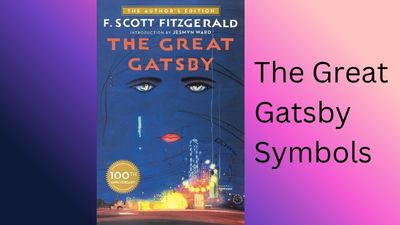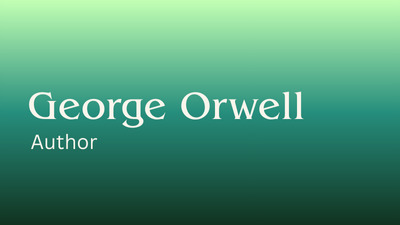Symbolism in literature is when an author uses objects, settings, or recurring images to represent ideas and concepts beyond their literal meaning. In 1984, George Orwell uses a rich network of symbols to make his warning about totalitarianism more powerful and memorable.
Every major symbol in the novel reveals something about surveillance, control, manipulation of truth, and the human struggle for freedom. To understand 1984 deeply, it helps to study these symbols in the order they appear across the three parts of the novel. For a deeper understanding of the novel’s underlying ideas, you can also explore the central themes in George Orwell’s 1984.
Symbols in 1984 Book 1 (Part One) – The Machinery of Oppression
Big Brother
- Meaning: The face of the Party’s power. Big Brother’s eyes are everywhere, and his presence is inescapable.
- Theme Link: Represents absolute surveillance and psychological dominance — citizens are reminded they are always being watched.
- Example in Text: Posters reading “BIG BROTHER IS WATCHING YOU” reinforce fear and loyalty.
Many of Big Brother’s most famous lines are listed among the memorable quotes from the novel 1984.
Telescreens
- Meaning: Devices that both broadcast propaganda and monitor citizens.
- Theme Link: Symbol of the Party’s technological control — no private space exists.
- Why It Matters: The telescreen is a perfect metaphor for the modern surveillance state.
Newspeak
- Meaning: A controlled language designed to limit thought.
- Theme Link: Shows how restricting language restricts the mind.
- Real-World Relevance: Reflects how regimes can manipulate vocabulary to control discourse.
Two Minutes Hate
- Meaning: Daily ritual of emotional manipulation.
- Theme Link: Focuses citizens’ hatred on enemies, ensuring unity under the Party.
Symbols in 1984 Book 2 (Part Two) – Illusions of Rebellion
The Glass Paperweight
- Meaning: Winston’s desire to hold onto truth and beauty from the past.
- Theme Link: Represents a fragile personal world free from the Party’s reach.
- Symbolic Moment: Its shattering during Winston’s arrest parallels the destruction of his rebellion.
The Coral Inside
- Meaning: The beauty and smallness of private love.
- Theme Link: A metaphor for Winston and Julia’s hidden relationship — small but precious.
Mr. Charrington’s Shop
- Meaning: A false sanctuary.
- Theme Link: Shows how even spaces that feel safe can be traps in a surveillance state.
Room Above the Shop
- Meaning: Illusion of privacy.
- Theme Link: Reminds readers that the Party’s reach is absolute, even in seemingly secret places. You can read the detailed plot summary of 1984 by George Orwell to see how these moments fit into the overall story.
Symbols in 1984 Book 3 (Part Three) – Destruction of the Self
Room 101
- Meaning: The place where ultimate fear becomes a weapon.
- Theme Link: Proves that the Party can break anyone by exploiting their deepest fear.
The Cage of Rats
- Meaning: Winston’s worst nightmare.
- Theme Link: The Party’s cruelty is personal — torture is tailored to the victim.
The Transformation of Winston
- Meaning: From rebel to obedient servant of the Party.
- Theme Link: Accepting “2 + 2 = 5” symbolizes the Party’s power over reality itself.
The Chestnut Tree Café
- Meaning: A place for broken rebels.
- Theme Link: Shows that no true resistance survives — only total submission remains.
My Thoughts
The symbols in 1984 novel by George Orwell are not mere decorative elements — they are essential to understanding Orwell’s warning. Understanding the symbols is easier when you also know the in-depth character analysis of 1984, as each figure embodies key symbolic ideas. Each one is a mirror reflecting aspects of life under totalitarianism, from public control to private betrayal. By unpacking these symbols, readers see how fragile freedom is when truth and individuality are under attack.
FAQ: Symbols in 1984
Q1: What is the strongest symbol in 1984?
Big Brother — his image defines the novel’s theme of omnipresent control.
Q2: What does the paperweight represent in 1984?
It represents Winston’s longing for the past and his fragile personal truth.
Q3: Why is Room 101 important in 1984?
It’s where the Party uses personal fear to break loyalty and love.
Q4: How does Newspeak act as a symbol?
It shows that controlling language is the most powerful way to control thought.


